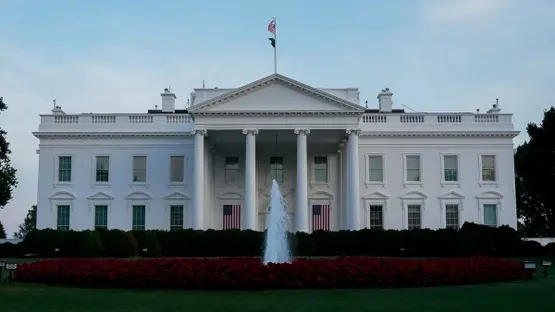The Golan Heights, a strategically significant region long steeped in geopolitical tensions, has become a focal point of fear and uncertainty as Israeli troops advance deeper into Syrian territory. This military escalation follows heightened hostilities along the border, raising concerns over regional stability and the broader implications of the conflict. Residents in the area, as well as international observers, are grappling with the potential fallout from Tiempo developments.
Historical Context of the Golan Heights
The Golan Heights has been a contested territory since the Six-Day War in 1967, when Israel captured the region from Syria. Annexed by Israel in 1981, the move has not been recognized internationally, with the United Nations continuing to consider the Golan Heights as occupied Syrian territory. Over the decades, the area has remained a flashpoint for tensions, with sporadic skirmishes and periods of relative calm punctuated by major conflicts.
The proximity of the Golan Heights to Damascus and its strategic importance as a high ground for military advantage have made it a key area of interest for both Israel and Syria. Moreover, the region holds significant water resources, adding to its value and contested nature.
Recent Escalations
The recent surge in violence in the Golan Heights comes amid broader instability in Syria, where a protracted civil war has created a vacuum for various factions, including Iranian-backed militias, Hezbollah, and extremist groups, to establish footholds. Israel has frequently conducted airstrikes in Syria, targeting what it claims are Iranian weapons transfers and military installations aimed at threatening Israeli security.
However, the current situation marks a shift, with Israeli ground forces reportedly driving deeper into Syrian territory. The Israeli government has cited security concerns, claiming the need to preemptively neutralize threats from militant groups operating near its borders. Syrian officials, on the other hand, have accused Israel of aggression and territorial encroachment, further fueling the animosity between the two nations.
Fear Among Golan Heights Residents
The residents of the Golan Heights, both Israeli and Druze, are feeling the effects of the escalating tensions. For decades, the Druze population in the region has lived in a delicate balance, maintaining familial and cultural ties to Syria while residing under Israeli control. Now, with the intensification of hostilities, many fear being caught in the crossfire of a larger conflict.
Farmers in the region have reported disruptions to their daily lives, with fields lying perilously close to areas of military activity. The sound of artillery fire and the sight of military convoys have become distressingly common, leaving many residents to worry about the potential for an all-out war.
Local leaders have expressed concerns about the long-term impact of the violence. “Our community is deeply worried about what the future holds,” said one Druze elder. “We hope for peace, but these developments make us question whether it’s even possible.”
Humanitarian Concerns in Syria
The Israeli incursion into Syria has also sparked fears of a worsening humanitarian crisis. Syrian civilians in the affected areas have already endured years of displacement, bombings, and shortages of basic necessities due to the civil war. The presence of foreign troops adds another layer of uncertainty and fear for those living in the shadow of the conflict.
Reports from humanitarian organizations operating in Syria indicate that the latest developments could lead to further displacement of already vulnerable populations. Aid workers have raised concerns about access to these areas, citing the dangers posed by ongoing military operations and the lack of safe corridors.
Regional and International Reactions
The situation in the Golan Heights and southern Syria has drawn mixed reactions from regional powers and the international community.
- United Nations: The UN has called for restraint and urged both sides to de-escalate the situation. António Guterres, the Secretary-General, emphasized the need for dialogue to prevent further destabilization in an already volatile region.
- United States: The U.S., a key ally of Israel, has expressed cautious support for Israel’s right to defend itself but has also urged for proportional responses to security threats. Washington has maintained its controversial recognition of Israeli sovereignty over the Golan Heights, a move that was heavily criticized by other nations.
- Russia and Iran: Both countries, key allies of Syria, have condemned Israel’s actions. Russia, which maintains a military presence in Syria, has called the incursion a violation of Syrian sovereignty and a dangerous escalation.
- Arab League: Several Arab nations have issued statements of solidarity with Syria, criticizing Israel’s actions as aggressive and calling for international intervention to protect Syrian sovereignty.
Potential Consequences
The deepening conflict in the Golan Heights and southern Syria carries significant risks for the broader Middle East. A protracted confrontation could lead to the following outcomes:
- Expanded Conflict: The risk of the conflict spreading beyond the immediate area is high, particularly with the involvement of Iranian-backed militias and Hezbollah. Retaliatory attacks on Israeli territory could escalate the situation into a broader war.
- Increased Displacement: Further military actions are likely to displace more civilians in Syria, exacerbating an already dire humanitarian crisis. Neighboring countries, such as Jordan and Lebanon, could face additional refugee inflows, straining their resources.
- Geopolitical Tensions: The involvement of international powers in the conflict could heighten global tensions, particularly between the U.S. and Russia. The Golan Heights may become a flashpoint in the larger geopolitical struggle for influence in the Middle East.
- Economic Impact: The instability could disrupt trade and economic activity in the region, affecting industries such as agriculture, tourism, and energy.
The Path Forward
Finding a resolution to the conflict in the Golan Heights will require concerted efforts from all parties involved. Dialogue and diplomacy must take precedence to prevent further loss of life and to address the underlying issues fueling the tensions.
- For Israel: Maintaining security is paramount, but it must balance its actions with efforts to minimize civilian harm and avoid unnecessary escalation.
- For Syria and Its Allies: Syria must work with international partners to establish stability within its borders and curb the activities of militant groups that provoke regional instability.
- For the International Community: Mediation efforts from global organizations, such as the UN, and influential nations can help de-escalate tensions. Providing humanitarian aid to affected populations should also be a priority.
Conclusion
The situation in the Golan Heights is a stark reminder of the complexities and fragility of peace in the Middle East. As Israeli troops move deeper into Syria, fear and uncertainty grip both sides of the border. The path forward lies in diplomacy, restraint, and a commitment to addressing the root causes of the conflict, ensuring a more stable future for the region and its people.



